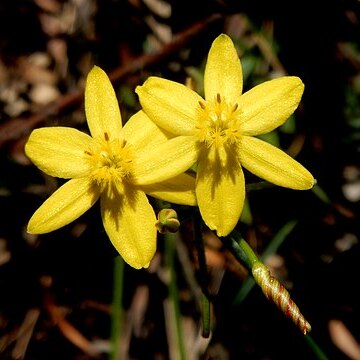A lily-like plant. It grows 6-18 cm tall. The corms are 1-3 cm long by 0.6 cm wide. They are cylindrical and 1-3.5 cm below the soil surface. The leaves are tufted and grass like. The leaves are 6-18 cm long by 0.1-0.15 cm wide. They are dark green and folded. The flowers are 2 cm across and bright yellow. They occur singly on the stems. The stems are 2-20 cm long. The fruit is a capsule 0.3-0.7 cm long. The seeds are dark brown.
Plant sparsely hairy; inflorescence 1-2-flowered.

